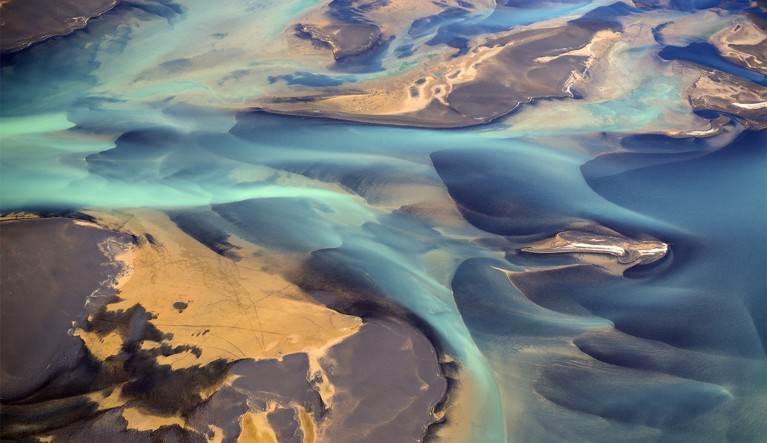The Environment: A History of the Idea Paul Warde, Libby Robin, and Sverker Sörlin Johns Hopkins University Press (2018)
Are we robbing the next generation by impoverishing the planet? Can we find a way for economies to grow without depleting the environment? Barely 50 years ago, such provocative questions might have seemed unimaginable. This was not because people were unaware of the damage already wreaked. Instead, as an intriguing book reveals, no one had fully conceptualized the intricate interconnections of nature. Without that framing, humanity could not adequately describe the scale of its own impact on the planet. From the infinitely complicated was born a simple term: the environment.
In The Environment: A History of the Idea, Paul Warde, Libby Robin and Sverker Sörlin trace the concept’s emergence and development from 1948 to today. The three environmental historians show that in the years following the Second World War, awareness grew of humanity’s capacity for cataclysmic destruction. Fears for the future ignited a desire to improve definitions of Earth systems. The environment as a concept was nurtured over succeeding decades in political demonstrations, unsung conferences and drawn-out legislative processes. That story is also one of new tools for measurement and interdisciplinary thinking, the aggregation of scientific results and shifting authorities, later catalysed by the digital revolution.
A vocabulary evolved to frame human-driven effects on the planet during postwar reconstruction, a feverish period for building global institutions and philosophies. In 1948, one of the first global environmental organizations was founded in Fontainebleau, France — the International Union for the Protection of Nature (IUPN), later the International Union for Conservation of Nature. Its mission was the “preservation of the entire world biotic community”: the idea of placing absolute limits on essential resources, later captured in expressions such as ‘peak oil’, was born. Yet, as the authors point out, that year also saw the launch of Soviet leader Joseph Stalin’s ‘Great Plan for the Transformation of Nature’. In response to half a million deaths caused by drought and famine in 1946–47, Stalin ordered a programme of dam and irrigation construction to protect the future of agriculture on the steppes. It ultimately wreaked “new havoc, including the desiccation of the Aral Sea”.
‘Thinking globally’ long predated the IUPN. Nineteenth-century polymath Alexander von Humboldt, for instance, saw nature as a “living whole” and predicted climate change. Soviet scientist Vladimir Vernadsky introduced the idea of Earth’s life-supporting zone in his 1926 book Biosfera. But by the 1950s, an infrastructure of expertise and mainstream will had arisen to sustain the global approach.
A new cadre of experts was called on to help inform public understanding. They included biologist Rachel Carson, who had been publishing popular books on marine biology since 1941. Another was ecologist William Vogt, author of the 1948 Road to Survival (A. Rome Nature 553, 152–153; 2018). In 1954 came geochemist Harrison Brown’s rumination on planetary resources and human population, The Challenge of Man’s Future. In 1970, the first Earth Day took place — and systems scientist Jay Forrester developed a model of global dynamics based on 120 lines of computer code. That laid the basis for the Club of Rome’s hugely influential report The Limits to Growth, in 1972.

Plant geneticist Janaki Ammal.Credit: John Innes Centre Archives
The environment as an idea “burst into life in a futurological soup”, as the authors write. It was also driven by pioneering scientists who were compelled to provide solutions to the degradation they witnessed. The ambitious 1955 international symposium Man’s Role in Changing the Face of the Earth, called by the New York-based Wenner-Gren Foundation for Anthropological Research, began to shift the emphasis to humanity as culprit. It brought together the likes of geographer Carl Sauer, zoologist Marston Bates and urban-planning theorist Lewis Mumford. Regrettably, only one woman was involved: plant geneticist Janaki Ammal, then leading the Botanical Survey of India.
A decade on, Future Environments of North America, convened by the US Conservation Foundation in Warrenton, Virginia, and including many of the same people, looked to extend those ideas across disciplines, from conservation to geology, economics and sociology. ‘Public policy’ and ‘management’ became part of established discourse. The vision of Canadian ecologist Pierre Dansereau was widely embraced: “A valid imaginary reconstruction of our world is now our greatest task. It may even be the condition of our survival.”
Five decades on, that warning is more important than ever. Overwhelming evidence reveals how Earth-system processes, from hydrology to biology, are altered by human activity. The concept of the Anthropocene (as much metaphor as formal term), an epoch defined by human impact on Earth, has reached the mainstream. So it is useful to look back and consider how conversations sustaining this theme first found voice, and to examine the challenges this radical way of thinking faced. Many now well-known threads in modern conservation and ecology — resources, biodiversity, pollution and climate change — have a cultural history. The Environment maps that territory well.
As I was reading it, the 2018 special report of the Intergovernmental Panel on Climate Change launched in South Korea (see go.nature.com/2yztjrf). It finds that limiting global warming to 1.5 °C above pre-industrial levels, rather than 2 °C, (as pledged in Paris in 2015) will require “rapid and far-reaching” transitions in land use, energy, industry, buildings, transport and cities. Refusal will trigger a staggering sequence of knock-on effects at every scale. At least twice as many key insect pollinators and plants would be likely to lose half their habitat. Corals would be 99% lost. There are thousands of other desperate scenarios, across species and landscapes. Concerted, immediate action by governments is imperative. As is “integrated expertise” — a concept challenged by leaders of some of the world’s most powerful economies. Individual action is still crucial, but might not be enough without policies that look beyond the political short term.
In 1987, Earth scientist Wallace Broecker noted in this journal: “We play Russian roulette with climate, hoping that the future will hold no unpleasant surprises” (W. S. Broecker Nature 328, 123–126; 1987). That narrative of ecological collapse has finally found its audience. Warde, Robin and Sörlin show that we have progressed since the word environment bubbled into public consciousness. But some still refuse to listen. How can so central a concept retain urgency and impact in the decontextualized online war of words, truth, lies, expertise and its rejection by the march of populism?
As environmental movements past illustrate, we need imagination, accuracy, long-term political will — and hope. “The environment is about people, too,” the authors note, “and how they respond to its changes and challenges.” Our relationship with nature goes far beyond resources, amenity or the scientific idea of an archive we learn to read. There are, as The Environment shows, ethical complexities in how we use and abuse the planet — and in how we frame its improbable riches.


 The bitter brawl over humanity’s future
The bitter brawl over humanity’s future
 Laying waste
Laying waste
 The launch of Spaceship Earth
The launch of Spaceship Earth
 In retrospect: Silent Spring
In retrospect: Silent Spring







